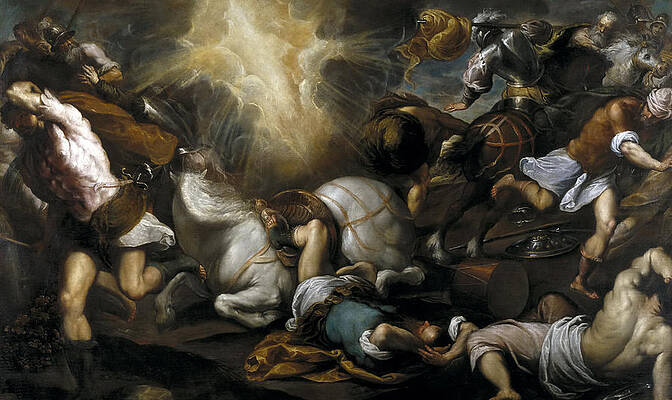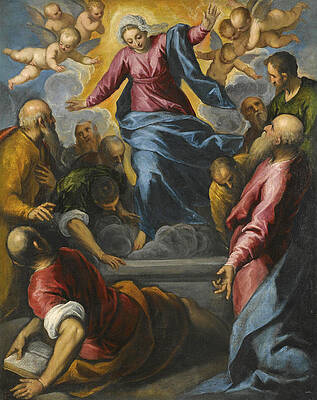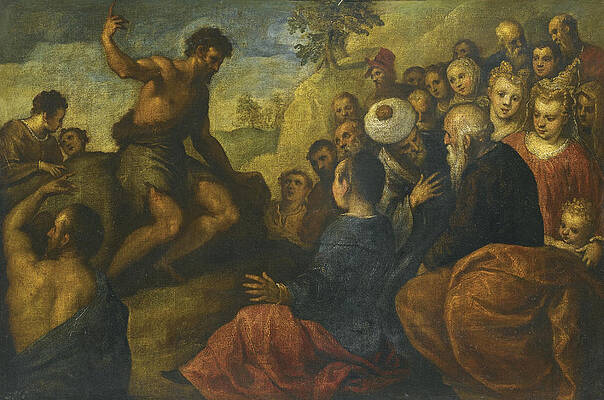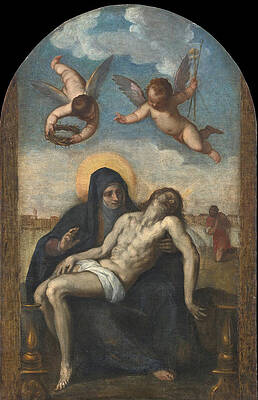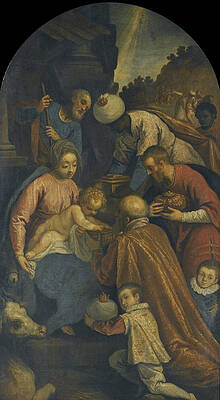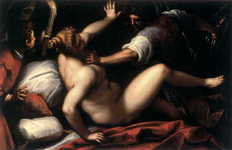Palma il Giovane
Paintings
The conversion of Paul
The Triumph of David
Lot and his Daughters
Pieta
The Deposition
The Assumption
Portrait of a Young Lady Head and Shoulders
Saint John the Baptist preaching
The Pieta. A View of Venice beyond
Adoration of the Magi
Christ on the Road to Calvary
Lamentation
The Raising of Lazarus


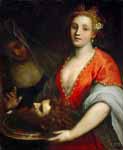
Salome with the Head of Saint John the Baptist

The Prophet Nathan admonishes King David
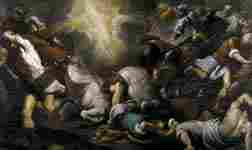


Presentation of Jesus in Temple



Venus and Cupid at Vulcan's Forge

Martyrdom of St Catherine of Alexandria


The Dead Christ with Two Angels




Amusements of the Prodigal Son

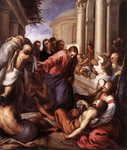




Allegory of the Victory over the League of Cambrai (detail)
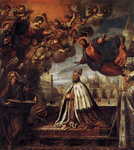
Doge Pietro Loredan Beseeching the Virgin

Doge Francesco Venier Presents the Subject Cities to Venice


Reconquest of Padua by Andrea Gritti


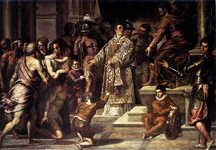
St Lawrence Giving the Wealth to the Poor


The Eucharist Adored by the Four Evangelists

Pasquale Cicogna in Dogal Robes Visiting the Church and Hospital of the Crociferi
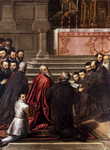
Pasquale Cicogna in the Church of the Crociferi Receives News of His Election to the Dogeship

Pasquale Cicogna Hearing Mass Celebrated in the Oratory of the Crociferi (detail)
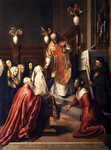
Pasquale Cicogna Hearing Mass Celebrated in the Oratory of the Crociferi


Andromeda rescued by Perseus from the sea monster
Drawings

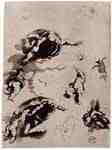




Fine Art Prints | Greeting Cards | iPhone Cases | Tote Bags | Clothing | Lifestyle | Beach ...
Iacopo Nigreti (1548/50[1] – October 14, 1628), best known as Jacopo Palma il Giovane or simply Palma Giovane ("Young Palma"),[2] was an Italian Mannerist painter from Venice. After Tintoretto's death (1594), Palma became Venice's dominant artist perpetuating his style.[3] Outside Venice, he received numerous commissions in the area of Bergamo, then part of the Venetian Domini di Terraferma, and in Central Europe, most prominently from the connoisseur emperor Rudolph II in Prague.
Biography
Palma was born in Venice. Born into a family of painters, he was the great-nephew of the painter Palma Vecchio ("Old Palma") and the son of Antonio Nigreti (1510/15-1575/85), a minor painter who was himself the pupil of the elder Palma's workshop foreman Bonifacio de' Pitati[4] and who after Bonifazio's death (1553) inherited Bonifacio's shop and clientele; the younger Palma seems to have polished his style making copies after Titian.
In 1567 Guidobaldo II della Rovere, duke of Urbino, recognized Palma's talents, supporting him for four years and sending him to Rome, where he remained until about 1572. Shedding most remnants of Roman manner after his return to Venice, Palma adopted the inescapable models and mannerisms of Tintoretto. His early biographers assert that he found a place in the ageing Titian's workshop; when the master died, Palma stepped in to finish his last work, the Pietà in the Accademia, Venice. Palma's first major public commission arrived after a 1577 fire in the Doge's Palace: three scenes in its grand council hall. By the mid-1580s he had digested Tintoretto's versatile figure postures and Titian's thick surfaces, emphasis on light, and loose brushstroke. In Palma Giovane's output, Freedberg detects also "an occasional discursive opulence à la Veronese; and inclinations towards descriptive naturalism à la Bassano."[5]
Adding naturalism to his Mannerist style by the 1580s,[6] he varied the ingeniously synthesised amalgam according to subject matter and patrons' own eclectic and conservative tastes, with "virtuoso skill and a facile intelligence."[7]
He worked alongside Veronese and Tintoretto on the decorations in the Doge's Palace where he came to know fully the Venetian tradition. From 1580-90 he painted cycles of large canvases either for Venetian Schools or sacred buildings (the sacristies of San Giacomo dall'Orio and of the Jesuit church (Gesuiti, the Scuola di San Giovanni Evangelista, and the Oratorio dei Crociferi. Thanks to the intelligent way they quoted from Tintoretto and their own narrative drive, these are Palma the Younger's best works. After this he went back to official commissions at the Doge's Palace.
Among these there is the magnificent portrait of Saint Pope Pius V, commissioned by the Bellanti Counts, an influential family who gave four "Capitani del Popolo" to the city of Siena in the Middle Ages. After three centuries in Tuscany, it was bought by Sir Robert Dick in 1842. After another two hundred years, the portrait was bought from Bonham's in London, one of the most ancient auction houses in the world, founded in 1793 and thanks to Mr. Roberto Gagliardi it was brought back to Tuscany where it can be admired at the Chianciano Museum of Art, a few kilometres from Siena.[8]
Palma il Giovane went on to organize his own, large studio which he used to produce a repetitive series of religious and allegorical pictures that can be found throughout the territory of the Venetian Republic. After 1600 he painted mythologies for a small circle of intellectuals. After the death of Tintoretto in 1594, he remained one of the leading painters in the City of Venice.
He was interred in the Basilica di San Giovanni e Paolo, a traditional burial place of the doges. Among his followers was the Brescian painter, Camillo Rama.
See also
Notes
Spelling and dates as in Sidney J. Freedberg, Painting in Italy 1500-1600, 3rd ed. (Yale University Press) 1993:560-62.
"Jacopo Palma called Palma Giovane, in Federico Zeri, Italian Paiuntings (Metropolitan Museum of Art), 1973:45.
Freedberg characterises him among Venetian painters as "the only painter of this generation to exhibit a semblance of vitality, even within formulae based mostly upon Tintorettesque style." (Freedberg 1993:560).
Bonifacio inherited the elder Palma's workshop in 1528; see Philip Cottrell, "The Artistic Parentage of Palma Giovane" The Burlington Magazine 144 No. 1190 (May 2002), pp. 289-291.
Freedberg 1993:561.
Freedberg notes in this context the Martyrdom of Saint Lawrence, San Giacomo dell'Orio, Venice, before 1584, then more conspicuously in the histories of the Doge Pasquale Cicogna in the Oratorio dei Crociferi, Venice 1586-87.
Freedberg 1993:561.
http://international-confederation-art-critics.org/roberto_gagliardi_bio
External links
Italian Paintings, Venetian School, a collection catalog containing information about the artist and his works (see Jacopo Palma the Younger in index; plates 52-53).
----
Fine Art Prints | Greeting Cards | Phone Cases | Lifestyle | Face Masks | Men's , Women' Apparel | Home Decor | jigsaw puzzles | Notebooks | Tapestries | ...
----
Artist
A - B - C - D - E - F - G - H - I - J - K - L - M -
N - O - P - Q - R - S - T - U - V - W - X - Y - Z
Retrieved from "http://en.wikipedia.org/"
All text is available under the terms of the GNU Free Documentation License


